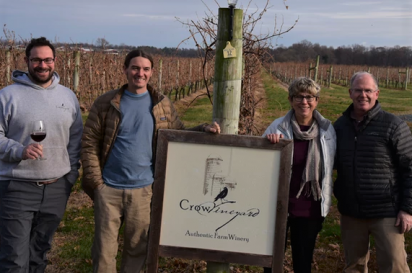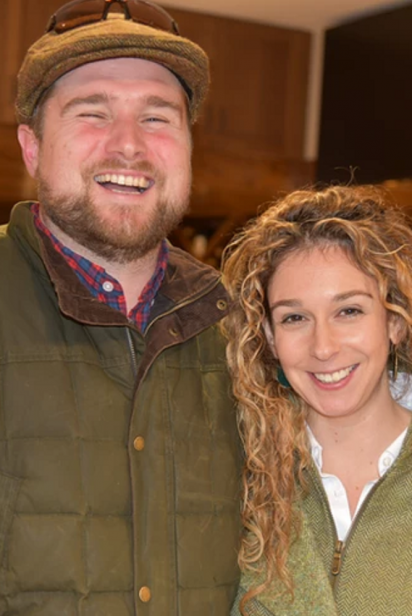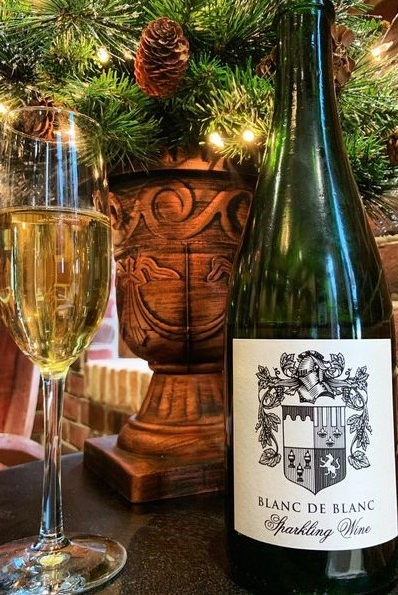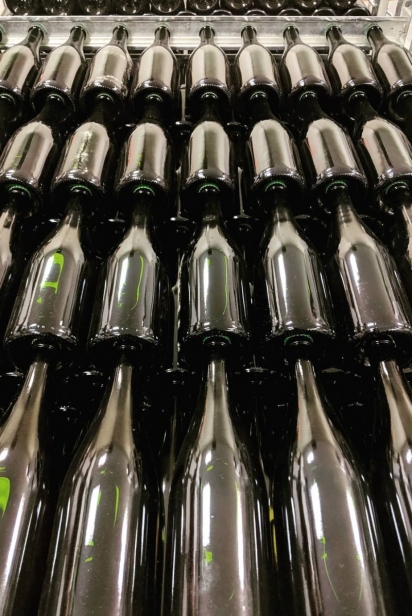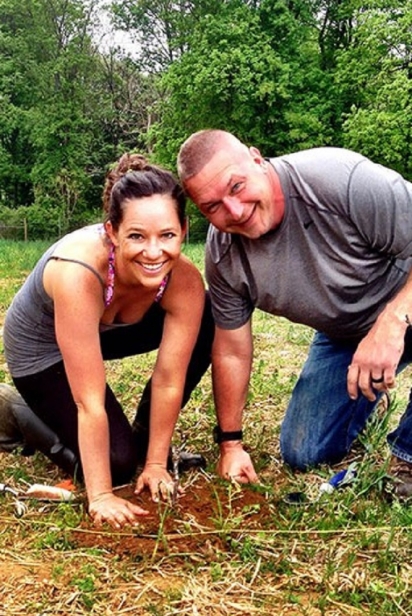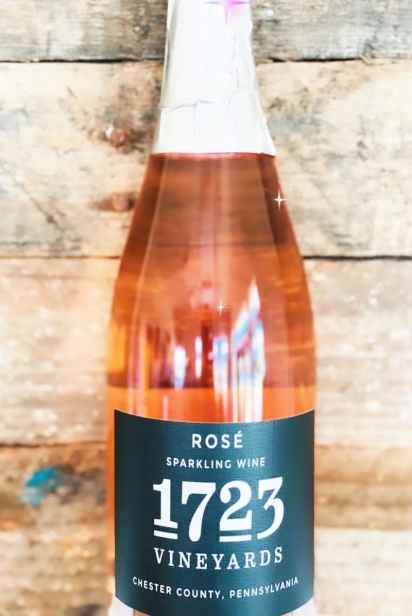Farm-To-Table Sparkling Wines
Although sparkling wine pairs deliciously with food, winemakers place it in a slightly different category than table wine, as they are generally made from grapes that are farmed differently in the vineyard than are table wines and definitely processed differently in the cellar. Making sparkling wine is also more time-consuming and labor-intensive, plus it needs specialized equipment in the winery — so it may be a tad more expensive per bottle. But seeing the bubbles sparkling in a tall flute, reflecting a crackling fire or tree lights during the holiday season is worth the extra time and money.
While there are many arcane and complex details in making sparkling wine — sometimes erroneously called “champagne,” which is produced only in Champagne, France — essentially the process begins with picking the grapes a little early, when they have less sugar to ferment and contain more acidity.
These grapes are made into a simple “base wine” and later undergo a second fermentation, traditionally occurring in individual bottles, by adding more yeast and sugar to produce the bubbles. Finally, a dosage with a little more sugar is applied to balance the acidity. Typically, a basic “brut” classification will have less than 10 grams of sugar per liter, while a dry table wine may have one to 5 grams. However, the bubbles and the acidity will not make the sparkling wine seem that sweet.
Many different grapes are used to produce sparkling wines, although Pinot Noir and Chardonnay are the predominant grapes of Champagne, and many sparkling wine producers in California also choose those classics. Limoux, the French region that argues that it beat Champagne to historically make the first commercial sparkling wines, grows Chardonnay but also uses Mauzac and Chenin Blanc, which is the grape of choice in the Loire Valley, especially in sparkling Vouvray.
Spanish cava is made primarily from Macabeo, Parellada and Xarel.lo (yep, that spelling is correct), while northern Italian bubblies primarily employ Muscat, Glera (for Prosecco) and Lambrusco. While there are producers on the East Coast who grow Chardonnay (especially) and Pinot Noir (less often), differences in soil and climate often make other varieties seem more attractive.
Crow Vineyard and Winery, Kennedyville, Md.
Almost hidden in the cornfields of Maryland’s Kent County between Galena and Chestertown, the Crow Vineyard is a rarity among Delmarva’s growing number of wineries — it produces lovely sparkling wines that are the perfect bubbly to celebrate the holiday season for those who love to search out local farm produce.
“We make about 150 cases of our sparkling Vidal Blanc every year and about 100 cases of our sparkling Barbera Rosé,” says Judy Crow, co-owner with husband Roy of the winery, bed and breakfast, and cattle farm located 10 minutes north of Chestertown.
Crow winemaker Michael Zollo, who comes from upstate New York and who worked in California wineries before joining Crow in 2017, explains their process. “We ferment the grapes at cool temperatures for about 20 days — about the same as we do our dry whites — then we rack [remove the wines off their lees or dregs] and filter,” Zollo says. Once sugar and yeast are added in the bottle, as they are in Champagne, they are left to ferment for three to six months before they are disgorged, a process in which the lees are frozen and expelled from the bottle to produce a clear wine. “Because of our smaller size, we cork and add the wire cage by hand, which is a time-consuming process,” Zollo says.
Outside of the Crow tasting room, Zollo points to a block of 19 rows of Vidal Blanc, a hybrid grape originating from a period more than 100 years ago when researchers in France crossed American and French grape varieties while searching for a solution to phylloxera, a root louse that devastated French vineyards, but which doesn’t bother American rootstock. Hybrids today are basically outlawed in France, but they are popular in the American East because they are hardier in cold climates and are more disease-resistant than European varieties, which are classified as “vinifera.” By general agreement, Vidal makes the best wine of all the hybrids and the wines that taste most like vinifera.
For a red variety for sparkling, Zollo likes Barbera, a grape grown in Italy’s Piemonte region that also grows well in the Mid-Atlantic area. Another popular European red variety that is the darling of the East Coast is Cabernet Franc, and some grape growers use it to make sparkling wine as well as table wine. A side note is that, since red grape juice is generally white — the skin gives the color — red grapes can produce in all-white blends as well as “blancs de noirs,” white sparkling wine from red grapes.
Crow Vineyard & Winery, 12441 Vansant Corner Road; Facebook Instagram
Chateau Bu De, Chesapeake City, Md.
Just up the road from Crow is a newer winery that is the region’s other classic sparkling wine producer — Chateau Bu-De. Midway between Galena and Elkton, Bu De is an impressive and ambitious vineyard and winery on a knoll overlooking where Route 213 crosses the Bohemia River. Its young winemaker is South African native, Jacques van der Vyver, who has been at the winery since 2015, not long after its opening.
“We’re using Chardonnay and Pinot Noir,” van der Vyver says, “but we’re planning to add to the program some Pinot Blanc,” a grape widely grown in northeast France, Germany and northeast Italy. “We now make 250-300 cases, but if we have an exceptional year, I could imagine keeping some for a reserve.”
The basic house style is a brut, he says, “which we give a dosage of 7 ½ to 10 to 13 grams per liter. An advantage that Bu-De has is that it has mechanized equipment needed to make large quantities of wine.”
Chateau Bu-De Winery and Vineyard, 237 Bohemia Manor Farm Lane; Facebook Instagram
1723 Vineyards, Landenberg, Pa.
Just across the Pennsylvania border along Route 896 in Kemblesville, Ben and Sarah Cody are also making sparkling wine at their 1723 Vineyard. Both coming from farm families in the Midwest, the couple each enjoyed successful careers in other fields before turning their attention to viticulture.
1723 produces its sparkling wines using Cabernet Franc and a newer grape variety, Chardonel, a hybrid derived from Seyval Blanc and Chardonnay that was first produced at the experimental station at New York’s Cornell University. “We’re experimenting with blending different cuvées, as they do in France,” Ben says, “as well as using oak barrels for complexity.”
Cody explains how crucial it is picking at the right time, especially getting the fruit sugar, measured on the Brix scale, and acidity in the right range. “Brix is certainly a major factor,” he says. “The secondary fermentation yeast we like to use is only alcohol-tolerant up to 11.5% alcohol. To get the carbonation levels we desire, and to ferment dry before the dosage is added, that means 18 Brix is the max [generally grapes are picked with Brix in the 20s]. Acidity is also very important, as I am loathe to adjust acidity in our whites and sparklings.”
“Ultimately, we chose not to make a sparkling blanc this year,” Cody continues, “because the Chardonel was already at 18 Brix on August 12, a full three weeks ahead of normal. The grape just wasn’t phenolically mature, even though the harvest chemistry fit what we were looking for.” So at 1723, it’s a rosé-only production year.
1723 Vineyards, 5 McMaster Boulevard; Facebook Instagram
Which gets us back to a phrase heard in wineries around the world, “Winemaking is just a type of farming.” And at East Coast wineries with cold winters and humid summers, wine farming is always a challenge, but one that produces delightful results.



